‘Doing our very best’
Teams across the University are working tirelessly to prepare for the return to campus. Here’s a look at some of what’s happening.
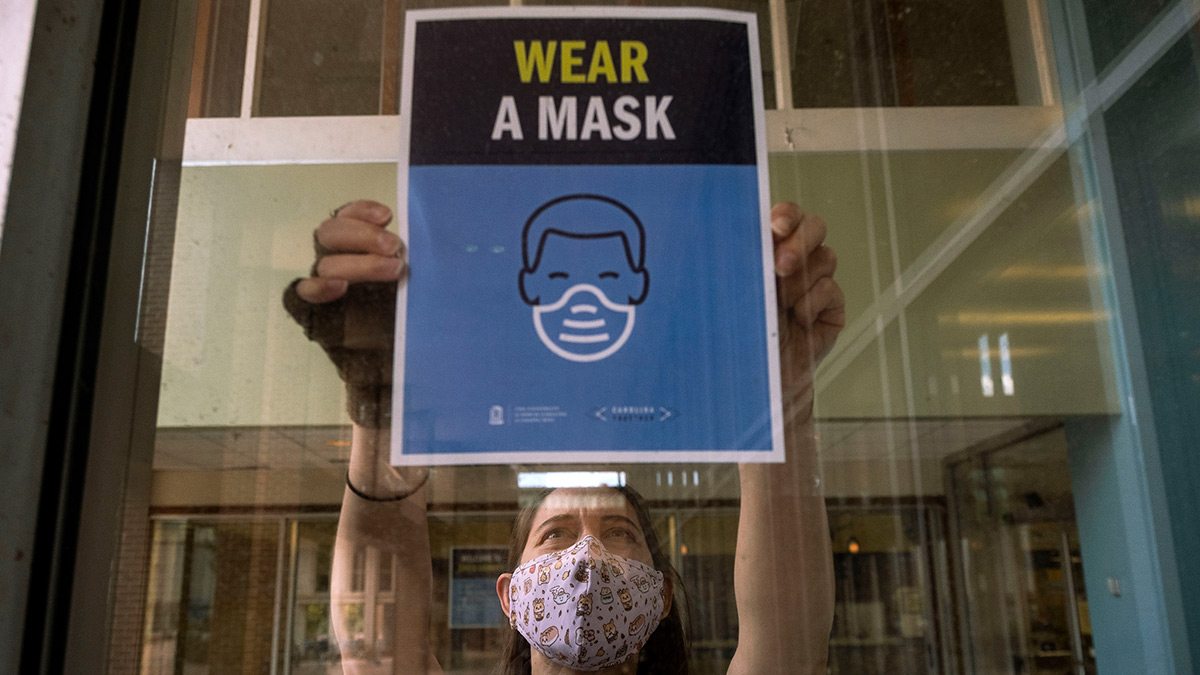
Teams across the University are working tirelessly to prepare for the return to campus. Here’s a look at some of what’s happening.
Life at Carolina typically slows during summer. There are fewer class offerings. Many faculty focus more on scholarship than teaching. Even for year-round administrative staff and researchers the pace can feel more moderate. Not this summer.
This summer, because of the realities posed by COVID-19, the pace quickened and the workload increased as the University community prepared for a fall like no other.
With move-in starting Aug. 3 and the first day of classes a week later, on Aug. 10, the Carolina campus buzzes with activity. People from all departments, offices and divisions across the University are doing their part (while wearing face coverings and practicing healthy physical distancing) — posting directional signage in and around residence halls, reconfiguring classroom furniture to meet physical distancing standards, erecting canopies to give students, faculty and staff places to go instead of congregating in buildings.
For many, the preparations continue the work that began last spring, when the pandemic forced the campus to significantly reduce on-campus operations and shift to remote instruction. For instance, to prevent a disruption to research and scholarship, University Libraries prioritized digital delivery, purchasing more than 1,000 additional ebooks, scanning more than 8,100 pages of materials from the Wilson Special Collections Library during the last four weeks alone and filling more than 1,600 document delivery requests since June 1. After contactless pickup service began July 13, the Libraries have provided nearly 2,000 items to more than 400 campus and community patrons.
“We’ve really never been closed,” said Doug Diesenhaus, director of strategy, assessment and space planning for University Libraries.
Now Diesenhaus and scores of other library staff are preparing for a safe and healthy return to campus.
Here’s a look at what they and others across campus are doing to get ready.
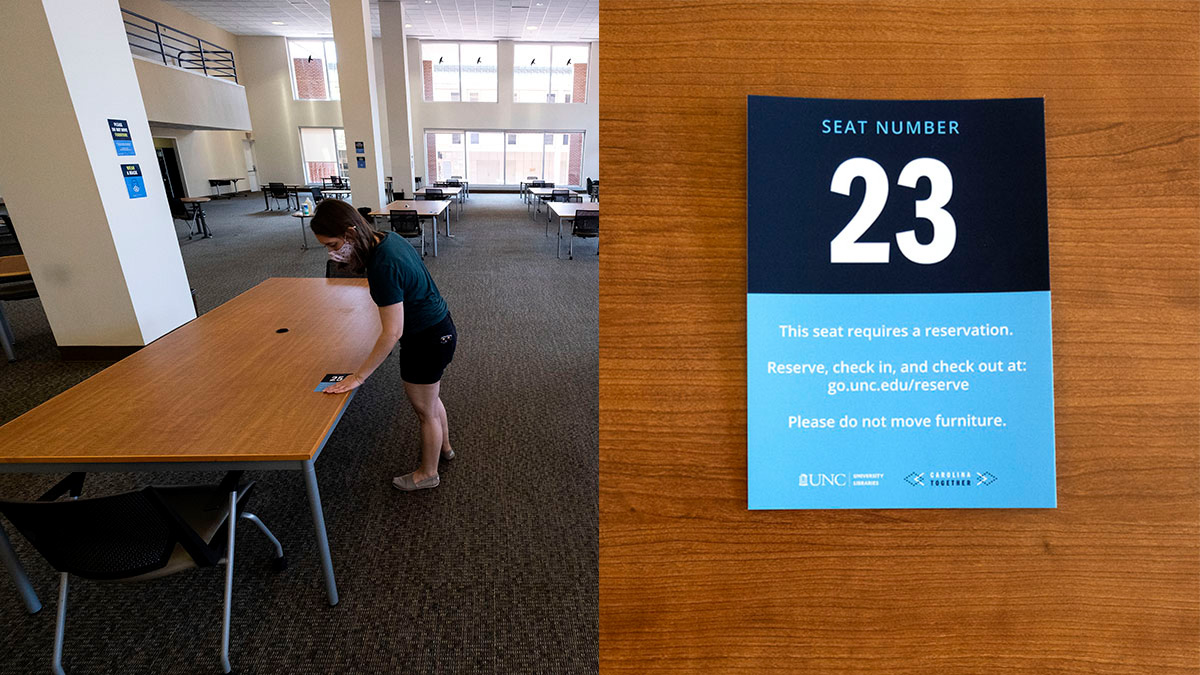
Library adjustments
In preparation for the start of fall semester, University Libraries has added digital electronic reserves materials for 429 classes, reaching 13,239 students. Another Herculean task they’ve taken on in recent weeks: printing and placing more than 700 informational and directional signs and decals in Davis and the Health Sciences libraries to keep everyone safe, distanced, oriented and flowing smoothly through the buildings once they reopen Aug. 3.
“We understand that users need and want to come into the physical spaces for studying, so we’re committed to making those spaces available in a safe way,” Diesenhaus said.
In addition to making sure all seating is at least 6 feet apart, the University Libraries team is readying a seat reservation system that allows people to reserve seats ahead of time or as they arrive, using an online seating chart, much like they do when reserving auditorium seating for a performing arts event. Reservations — free, of course — are for up to two hours per day.
“We have numbered the seats, and we are indicating whether they have a table or a soft seat and whether there is power available at that seat and whether the seat is accessible,” Diesenhaus said. “Lots of folks on staff have worked together to try to make this as usable and convenient as possible.”
“It’s all part of our unwavering commitment to delivering research and scholarship materials to our faculty, graduate students, undergrads and community users,” said Diesenhaus. “This has been a really amazing team effort. Our most important consideration at every moment of this work has been the safety of our users and staff. Then it’s a matter of getting people what they need for their work and doing it safely.”
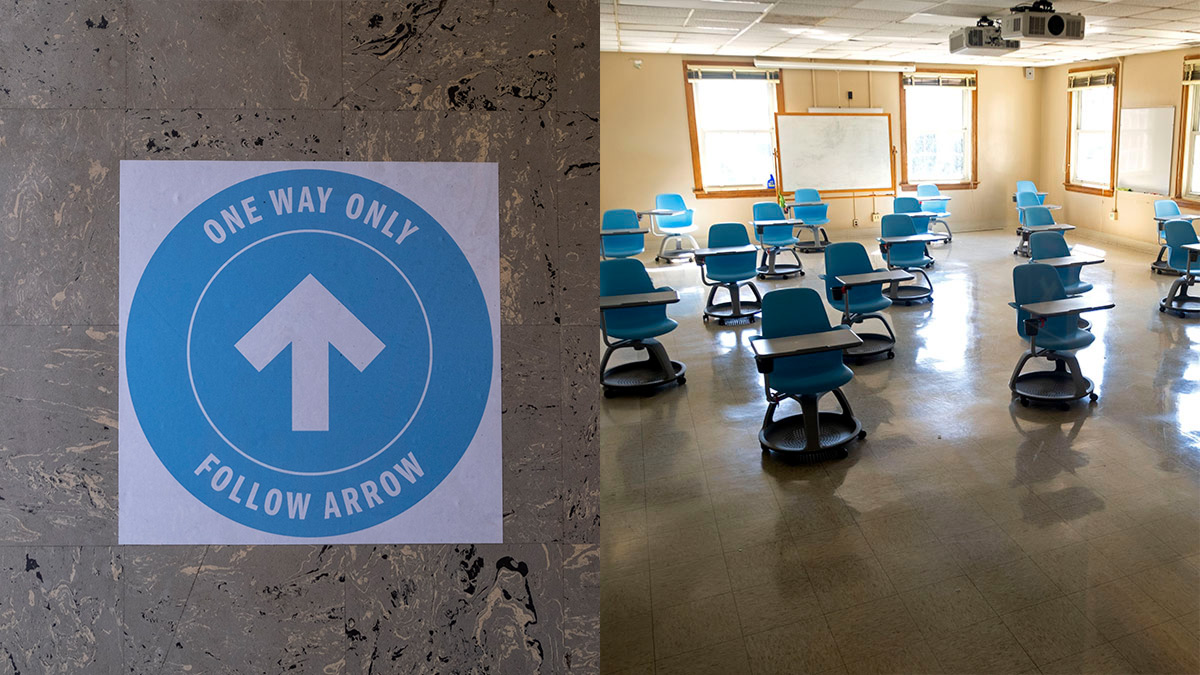
In the classroom
The classroom operations team’s brain-twister of a challenge began some three months ago, after Provost Robert Blouin asked the University group to provide a list of the capacity of every classroom on campus. “That was pretty easy. That’s what we do,” said committee member and engineering director Abbas Piran, explaining that the team maintains computerized floor plans of all campus spaces.
Thus began a months-long process, involving the classroom operations team and hundreds of others across campus, to prepare interior spaces for on-campus learning. Following CDC guidelines that specify six-foot physical distancing, the team used mathematical formulas to analyze classrooms for their new capacity, taking into account the puzzle of different types of desks, tables and other furniture.
Next, they hit the field, visiting classrooms with interior design teams to test their assumptions and fine-tune seating arrangements.
“We had to find safe seats for every student who wants to come back to campus, while providing buffers for the professors,” Piran said. “It was a huge challenge, but success for us was the only option. We had to find a solution, and I think we worked toward that end.”
The classroom reconfiguration work took weeks and involved collaboration by people from many campus departments. Next, the team conducted a time-and-motion study to determine how long it would take to bring students into buildings to their final destinations. They developed a process that accommodates 30 minutes between classes. Since then, teams have been posting signage to direct foot traffic, often keeping it flowing one way and providing provisions for ADA accessibility. They worked with UNC Creative on the look of signage and placed them after optimizing for line-of-site and distance considerations.
Attendants will be on hand at some of the larger buildings, at least at first, to help students navigate the best routes from building to building and to explain which building entrances lead to their classrooms. UNC Hussmann School of Journalism and Media Professor Steven King is even developing an app to help with wayfinding.
“We’re attacking this from multiple fronts,” Piran said. “Hopefully we have enough touchpoints that we can bring students safely into and out of our buildings.”
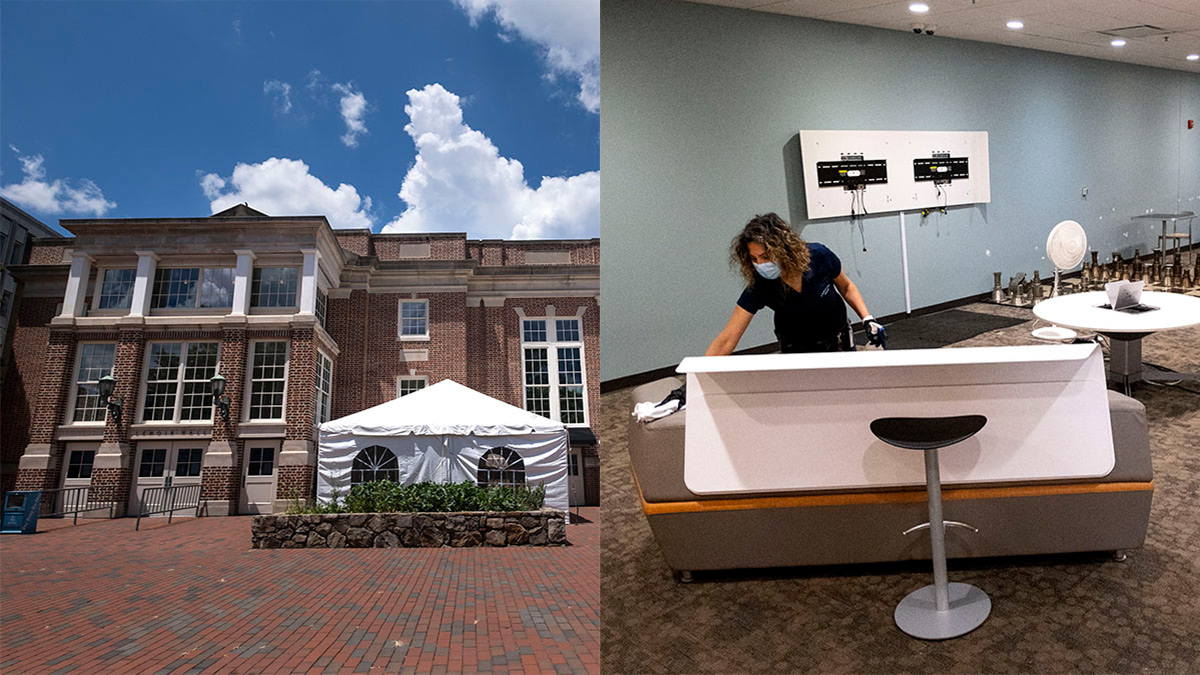
Dining on campus
Scott Myers, director of auxiliary services, knew something had to be done about the typical lunchtime hive of activity at Lenoir Hall. Following guidance from Carolina epidemiology experts and state and county health departments, he and his teams have been working on a range of solutions to reduce customer flow and allow people to eat while physically distanced.
Lenoir Hall with tents placed outside.
Canopies on the south side of Lenoir Hall, near the Pit, will house Lenoir Market, featuring to-go stations from food court favorites such as the Mediterranean Deli and CholoNad, as well as 1.5.0., with local and organic offerings. Myers is pleased to report that two of the most popular 1.5.0. salads — berry and chicken — will be on the menu.
Foot traffic will flow one way into Lenoir through the doors to the left of the Lenoir Market tents and exit on the north side. Inside, decals on the floor will make physical distancing easier.
Myers said students, faculty and staff can expect plenty of their favorite campus dining options, including Wendy’s, Alpine Bagel, the Chick-fil-A in the Beach Café and Saladelia at Marsico Hall. And they’re bringing in food trucks — 14 at last count — and parking them at six different locations around campus. A map in the new Carolina Ready App will show where the canopies and food trucks are located on campus.
At all venues, Myers’ team measured the distance between tables and removed extra seats. “We’re doing what all restaurants are doing — serving take-out food, eliminating self-serve stations. All employees are wearing masks. We’re doing extra hand washing and extra sanitizing. We’re trying to keep our staff safe and the students, faculty and staff safe, too.”
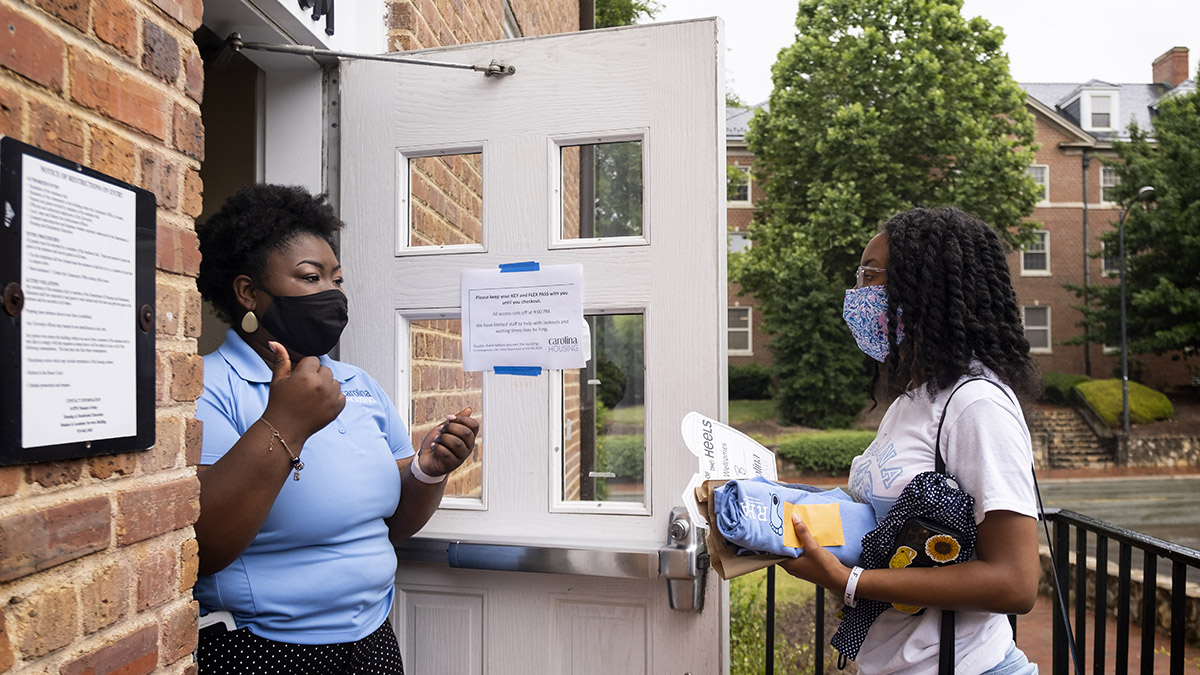
Residence hall life
The folks at Carolina Housing are hyper-focused on move-in, which begins on Aug. 3. The residence advisors, or RAs, arrived on July 24 and are currently in training sessions to prepare for next week and the academic year.
Mariam Azzam, assistant director of marketing for Carolina Housing, urges all students and their parents to review the move-in guide on their website — and to make a move-in appointment through the housing portal.
The whole process has changed, she said. “It’s different for everybody. It’s different for our staff, some of whom have been doing this for many years. It’s different for our returning RAs. Above all, we ask that everyone be kind and patient during the move-in process.”
Yes, the housing team is putting up signs in residence halls. But the signs are important, Azzam stresses. “Read the signs. Make sure you’re familiar with them. Read the move-in guide, especially the section called COVID-19 Modifications for Living on Campus. You really do have to abide by these community standards.” The standards include wearing face coverings, capacity limits in common areas and elevators and one-way traffic in stairwells.
“The number one thing we want everybody to know is we really amped up in terms of cleaning and disinfecting, especially the high-touch areas,” Azzam said. “There will be enhanced cleaning in bathrooms and common areas.”
Azzam said she is feeling confident and excited, if also a bit exhausted. “It’s definitely a team effort. I have never been prouder to be on the housing team. We’ve always felt like this was a family. We’re very close-knit. We help out whenever and wherever we can,” she said. “This experience has been a test to the bond we share and, honestly and wholeheartedly, it’s made us want to help each other even more. At the end of the day, the number one priority is to take care of our student residents and our student staff and our own staff and be as much help to the Carolina Community as possible.”




